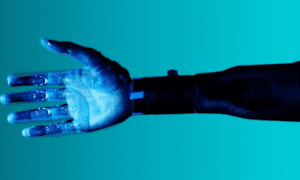Another year, another debate over healthcare in America. This year, the US will spend tens of billions of dollars on healthcare related expenses. This is the result of inefficiencies not only in how Americans pay and provide healthcare, but in the infrastructure of the system itself. This disproportionate expense is truly a crisis in America’s functioning.
One non-medical cost within healthcare is an invisible drain on time and resources: Data management. Every patient in America has a personal, highly individual health history that must be monitored and managed by their providers. However, the current technology of Existing Health Records (EHR’s), the system for storing and sharing medical data, is unconsolidated, poorly protected, and inefficient.
Limited by the lack of interoperability between systems, poor security and unwieldy management, data within the medical sector faces a number of problems. Different systems can often have difficulty transferring their health histories when individuals switch providers. As a result, nurses and hospital workers are forced to spend vital time inputting imperfect data across imperfect systems, resulting in the degradation and loss of data.
Additionally, in a time where cybersecurity is a hot button issue, the healthcare industry is no exception. Many current systems of EHR are insecure and open to breach from 3rd parties. In 2017, the UK’s National Health Service (NHS) was hacked, compromising a still unidentified amount of data.
The current system of EHR prevents patients from receiving optimal care by keeping doctors from full, time-stamped medical histories of their patients. It forces untrained healthcare workers to spend invaluable time inputting medical histories into servers. And why shouldn’t the most personal data one can have be the most secure?
One tech, the Iris Network blockchain, may be the solution.
Blockchain has the potential to make the world’s economy faster, safer, and better. Now, this innovative Iris blockchain could make healthcare data secure, centralized, accountable, and accessible to those who need it most.
Iris essentially works like any other blockchain technology. Based on the already global Ethereum network, it creates a continually-growing list of digital records through cryptographic algorithms. These “blocks” of recorded data are then distributed into disparate networks. Any authorized user (but only authorized users) can then access these blocks with proper computational verification. Iris aims to take this technology that has been until now been used mostly for financial instruments like Bitcoin and Ethereum, and replace traditional EHR’s with a hypermodern, hyper efficient system of Iris EHR record management.
So how does Iris work? Utilizing a system of uploaders and buyers, the “Iris Ecosystem” functions by creating a symbiotic relationship between the multitudes of industries and professionals who can benefit from Iris’ data. Patients and authorized healthcare professionals act as the uploaders (dubbed “miners”) of data.
In exchange for their contribution, they are given an Iris token, which acts similarly to any other digital currency like Ripple or Bitcoin Cash. These Iris tokens are then put on digital coin exchanges so that buyers- insurance providers, researchers, and other firms- can purchase them. They then exchange these coins for aggregated, anonymized, and secure healthcare data.
This efficient and secure warehouse and market for data could be revolutionary for the healthcare industry.
First, the Iris Ecosystem reduces providers’ overhead costs from inferior forms of data storage, possibly making healthcare cheaper for consumers. Second, it gives patients and their doctors access to the most efficient and safe version of healthcare records possible, improving care.
Finally, the people behind Iris hopes it helps makes the market for buying and selling individuals’ healthcare data a safer and more efficient.
Easily accessible and secure data could cause insurance premiums to plummet and research to accelerate. Healthcare providers will have an unprecedented ease in maximizing the health of their patients. A successful adoption of Iris could see the end of the era of insecure, inefficient EHR’s, and a rise to a better, safer world.
The Iris Network is also a harbinger of what is to come for blockchain as a technology. No longer segmented to the financial sector, the idea of blockchain as a humanistic tool, one implemented for the betterment of life for everybody could inspire the next generation of altruistic blockchain engineers and entrepreneurs.
The next Bitcoin might not disrupt banking or compete with Bank of America, but rather drive healthcare providers to be more responsible and efficient. What industry could be next? Green tech coins? Coins to reduce hunger or improve mental health? Can blockchain technology continue to revolutionize industries that help people live and work healthier? Only time will tell, but one thing is sure: Iris is leading the charge.



















































